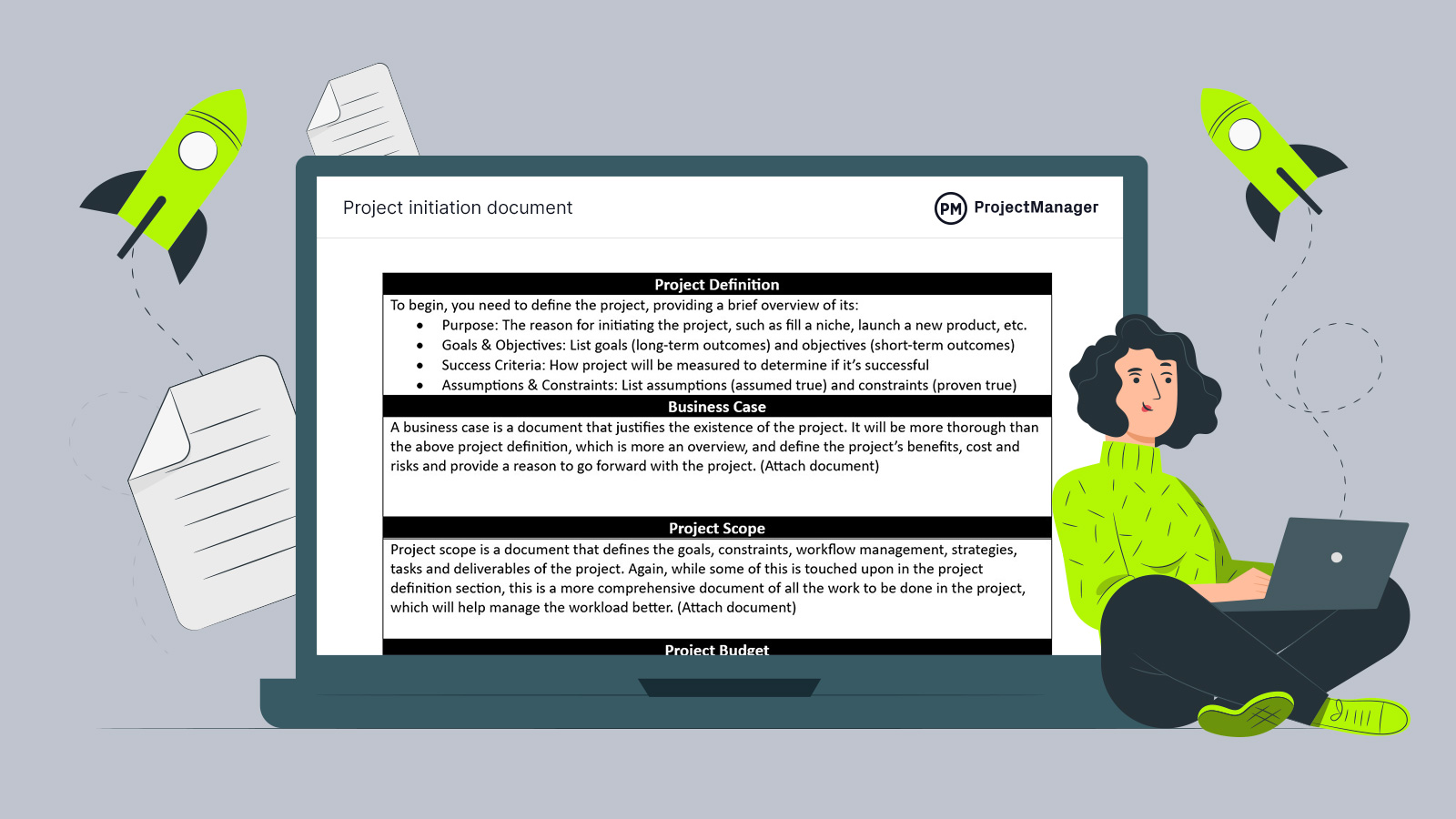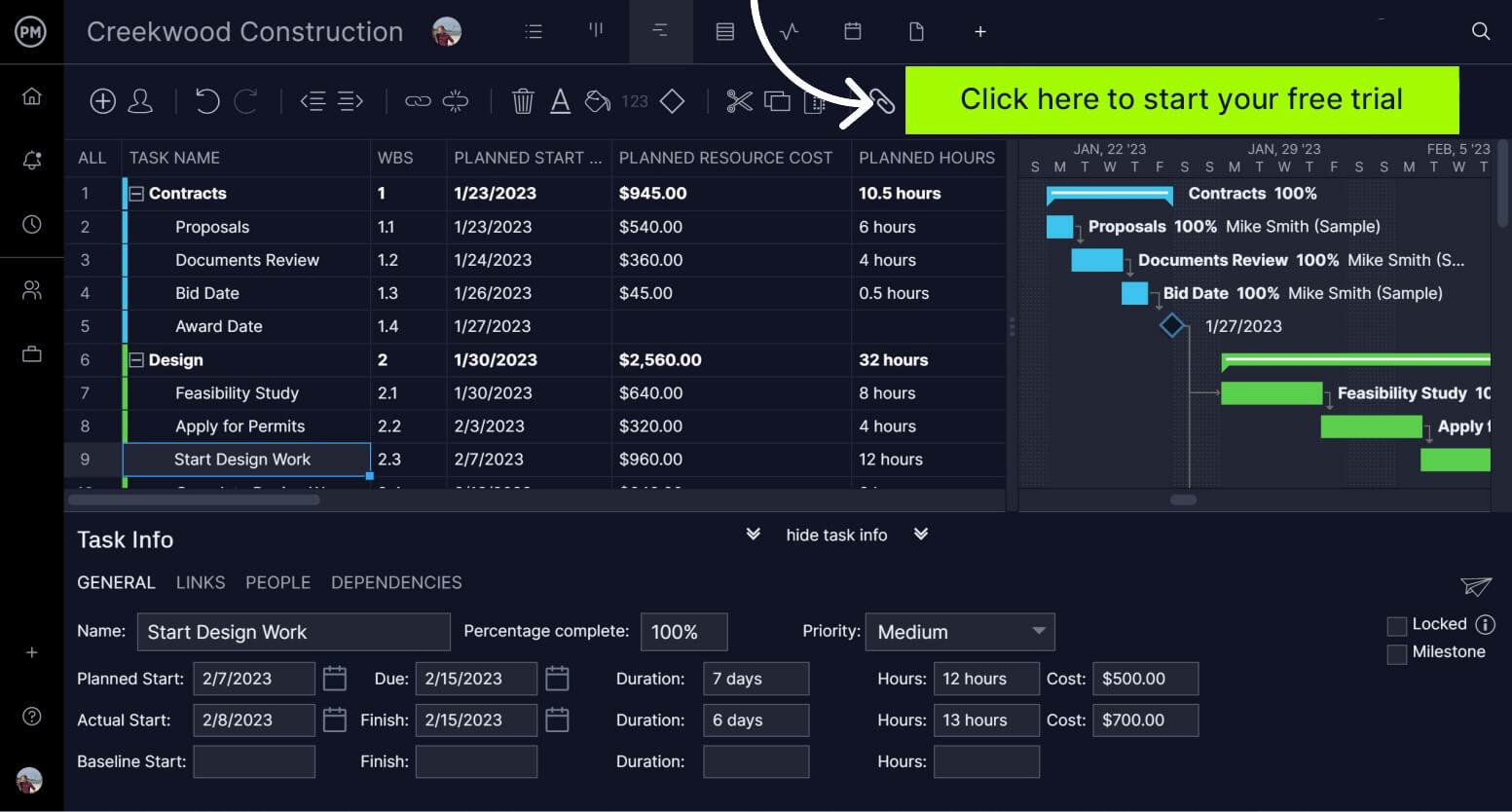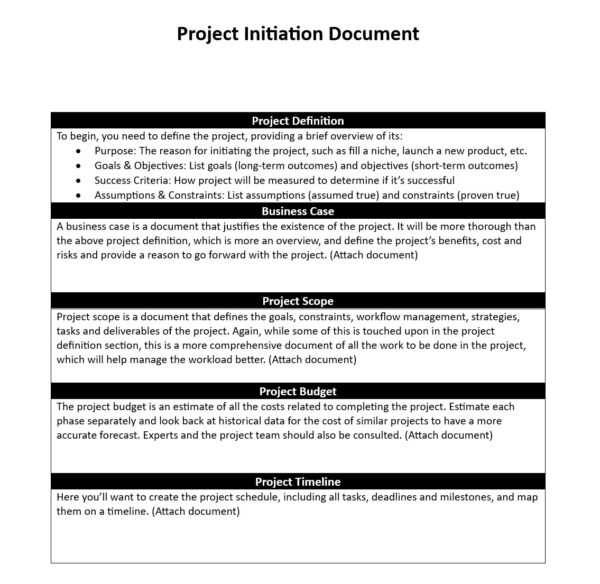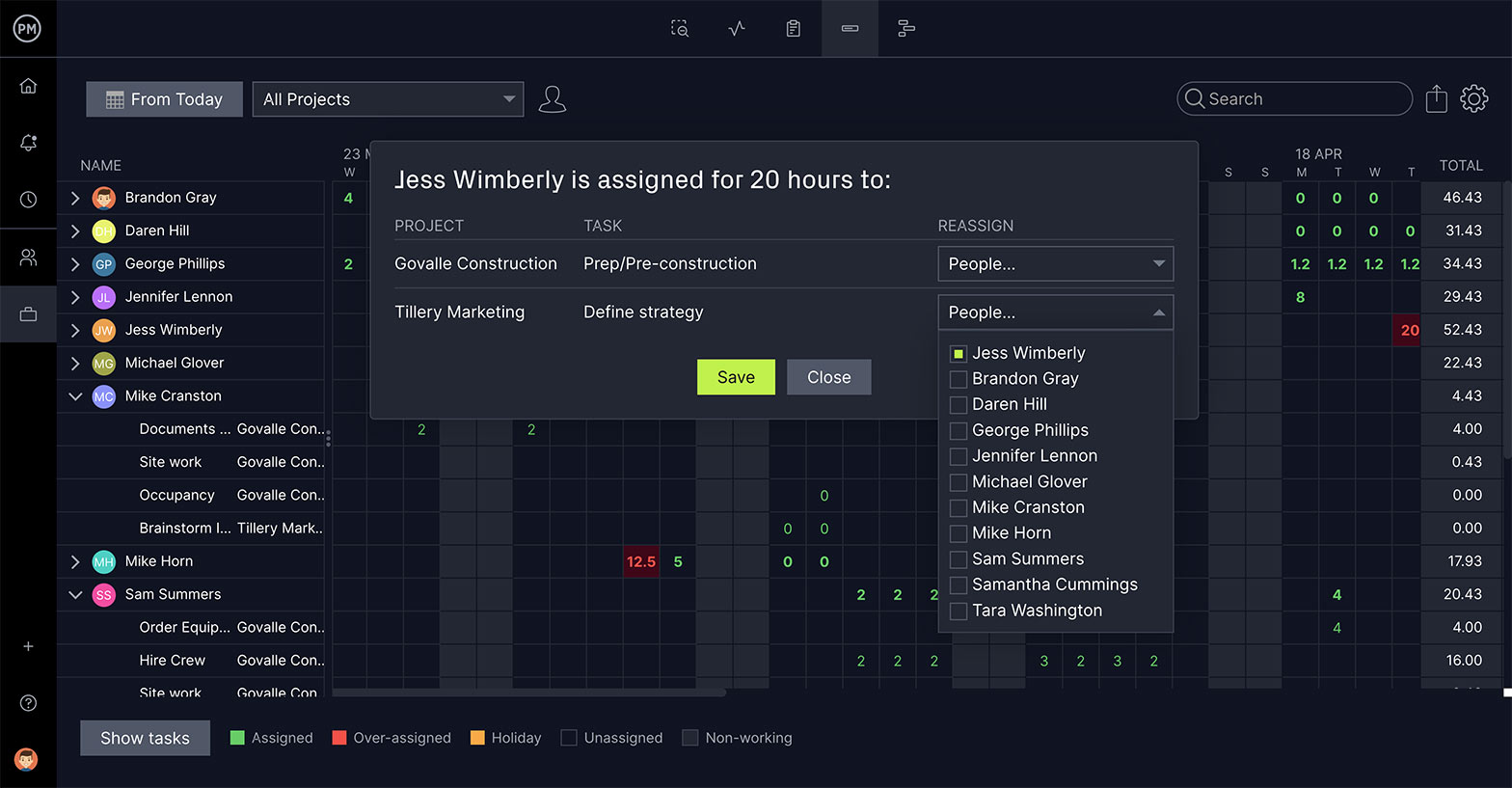Before you can start a project—even before you can plan it—you first need to define the project in detail. This allows the project manager to get buy-in from the project’s key stakeholders and ensure all the research has been done to move into the planning phase without any hiccups.
That’s why a project initiation document (PID) is so important. To understand why, let’s define the term and compare it to other project documentation. We’ll explore its importance and how to create a project initiation document, including all its many components. You can even download a free project initiation document template for Word to help you get started.

Get your free
Project Initiation Document
Use this free Project Initiation Document for Word to manage your projects better.
What Is a Project Initiation Document (PID)?
A project initiation document (PID) is used to define the project thoroughly. It’s similar to a project charter but more in-depth. It’s used primarily in PRINCE2 methodology, which is an acronym that stands for PRojects IN Controlled Environments. A PID is linear and process-based, breaking a project into defined stages and is mostly used in the UK.
While the project initiation document is the last part of the project initiation phase, it can be looked at as the basis of the project plan that occurs in the next stage. It also helps get buy-in for the project from its key stakeholders and informs the project team of what’s to come.
A project initiation document is a living document that’s frequently reviewed and revised throughout the project’s life cycle. Things change and those changes must reflect in the project initiation document. It’s an incredibly important document for those reasons and more, which we’ll get to shortly.
It can also be considered the starting gun in the race to complete the project. Once you have the track laid out with the project initiation document, then you need the vehicle to get through it effectively. ProjectManager is award-winning project management software that takes your PID and turns it into a workable project plan.
Our robust Gantt chart helps you plan and schedule project tasks and resources, link all four types of task dependencies to avoid costly delays and even filters for the critical path to identify essential tasks. Once your plan is in place, set the baseline to capture your planned effort and compare it to your actual effort in real time. This helps you keep your project on schedule and within its budget. Get started with ProjectManager today for free.

Why Is It Important to Create a Project Initiation Document?
There are so many ways that a project initiation document is important. It’s probably the most important project document created during the initiation phase because it collects most of the other project documents from that phase. In this way, the project initiation document ensures that the project is understood fully before taking it to the project board and asking for their financial support.
Another important aspect of the project initiation document is that it acts as the baseline. The project board and the project manager both can refer to it and track their progress. They do this by collecting data on the actual process and comparing it against the project initiation document. It can also help identify issues that might arise and impact the scope, cost or time of the project.
The project initiation document is also a great tool to bring new project members up to speed. They can learn everything they need to know about the project in one place, such as what it’s about, the reason for the project, business justification, risks, how it’s managed and more.
What Should Be Included in a Project Initiation Document?
We’ve talked a lot about what a project initiation document is and why it’s important, but we’ve yet to go into detail about what it includes. This might be the most important part of our discussion. Here, we’ll outline the different sections of the project initiation document and what they do.
Project Definition
To begin, the project initiation document briefly summarizes the project and goes into a short description of the following.
- Purpose: The reason for the project, whether that’s a new product, filling a market niche, etc.
- Goals & objectives: Define the goals, long-term outcomes, and the objectives, short-term outcomes, of the project.
- Success criteria: Explain how you’ll measure the project to determine if it’s successful or not.
- Assumptions & constraints: List what you assume is true and what you’ve proven true in terms of what can impact the project.
Business Case
The business case is the document that justifies the project. It’s similar to what’s discussed in the project definition but goes into greater detail. It’ll define such things as the benefits of the project, its cost and risk, etc.
Project Scope
This is where you outline everything that must be done to complete the project, including defining its goals, constraints and workflow management.
Project Budget
Here’s where you’ll make the most accurate estimation of project costs possible. This is done through several different techniques, as you want to be as close to the actual cost as you can to avoid losing money. Therefore, use expert opinions, historical data and break down the project into tasks and estimate the costs associated with those tasks to get your budget.
Project Timeline
Having all your deliverables, activities and tasks listed will help you schedule the project. Each task should have a beginning date and an ending date. Then you’ll want to place the tasks on a visual timeline so you can see the entire project laid out on one page.
Related: 12 Best Project Scheduling Templates for Excel
Project Breakdown
To avoid accidentally overlooking a task in your project timeline, use a work breakdown structure. This is a hierarchical tree chart with the final deliverable on top and all the other deliverables that get you there branching down from there. Knowing all your deliverables will help you determine all the tasks necessary to produce them.
Resource Plan
Resources are all the things you need to execute the project, which include your team, equipment, materials, etc. This document will list all those resources, how much of each you need and when you’ll need them. This effort will be coordinated to be as efficient as possible.
Risk Plan
Risk is inherent in all projects, whether positive or negative and must be accounted for. The risk plan will identify these risks and what to do with them if they become issues in the project. You’ll want to assign a team member to respond to them and set a priority, impact and likelihood of occurrence.
Change Management Plan
Change is another given in a project, which is where the change management plan comes into play. It creates a process to manage those changes so they can be reviewed and approved or rejected. If approved, the plan will also detail how the change will be communicated and implemented into the project.
Project Team Roles & Responsibilities
This document will define the roles and responsibilities of everyone involved in the project. It’ll also explain who to report to and who on the team will answer any questions the team member might have. This will be communicated to everyone before starting the project.
Project Controls
To keep projects on schedule, managers must monitor their progress and performance. Project controls are used to ensure the project aligns with its plan and budget, performs as expected and meets quality standards.
Communication Plan
Stakeholders need to be kept informed, but they don’t need to get into the weeds of the project. The communication plan defines who needs to know what, how frequently they should be updated and what is their preferred method of getting data. The communication plan can also incorporate keeping everyone on the project team informed as well.
Project Initiation Document Template
So you don’t have to create one from scratch, we’ve included a free project initiation document template for Word. It outlines all the various sections that we defined above and is completely customizable so you can add or remove sections as you see fit. Attaching all your supporting documentation will make this free project initiation template invaluable.

Project Initiation Document vs. Project Plan
The project initiation document might sound a lot like a project plan. As we’ll see when we break it down into various components, there are some elements that are the same. For example, both will have a project timeline, deal with resources and a budget. But while the two are similar, they’re not the same.
For one, the project initiation document is more high-level than a project plan. The project plan is specifically designed to outline the steps that’ll take a project from start to finish, resulting in a deliverable. It’s used more as a roadmap while the project initiation document is a detailed overview of the entire project, including its reason for existing.
Another difference between the project initiation document and a project plan is that the PID is part of PRINCE2. You’re unlikely to find such documentation in a project run by another methodology. Take a waterfall approach, it would have a similar document but calls it the project charter, which covers much of the same ground.
Project Initiation Document vs. Project Brief
A project brief is similar to a project initiation document in terms of scope but again differs in terms of detail. While the PID gets information from the project board, which will make the decision as to whether to approve the project or not, a project brief is a short description of the key elements of the project.
The project manager or project lead creates the project initiation document. They’ll usually start creating the PID after the project brief has been made and agreed upon. In a sense, it initiates the project initiation document. That avoids having to do a lot of detailed work that’s rejected by the project board or stakeholders.
ProjectManager Helps You Manage the Project
Templates are great, but they’re static documents that require manual updates. When you’re managing a project you want efficiency. ProjectManager is award-winning project management software that gives you all the features you need to move from the initiation phase of the project to execution, monitoring and control. Our unlimited file storage gives you a central hub to hold all the supporting project documents from your project initiation document so they’re always at hand. But that’s just the start of what our software can do for you.
Monitor Your Project With Real-Time Dashboards
Once a project is executed, managers are deeply involved in monitoring and controlling that project to ensure that it’s aligned with the project schedule and budget. Real-time project dashboards provide a high-level overview of projects’ progress and performance. They capture live data and display it in easy-to-read graphs and charts that show time, cost, workload and more. Unlike lightweight tools, there’s no setup required. It’s ready when you are.

Keep Teams Productive With Resource Management Features
One way to make sure that you’re staying on course is by managing resources. Your most important resource, of course, is the project team. You can save their availability, including PTO and global holidays, to make it easier to assign them tasks. Then use the color-coded workload chart to ensure no one is overallocated. If some are, simply reallocate resources right from the chart to balance their workload and keep them working at capacity and productive.

There are many other features that help with task management, such as our multiple project views that allow team members to work with the tools they want and risk management features that identify and track issues until they’ve been mitigated. Automated workflows add efficiency and task approval settings ensure only quality is delivered. A project initiative document sets up the project to succeed and ProjectManager makes sure it does.
ProjectManager is online project management software that connects teams no matter where they are or when they work. Share files, comment at the task level and more to foster better collaboration. Join teams at companies such as Avis, Nestle and Siemens who are using our software to successfully deliver projects. Get started with ProjectManager today for free.


